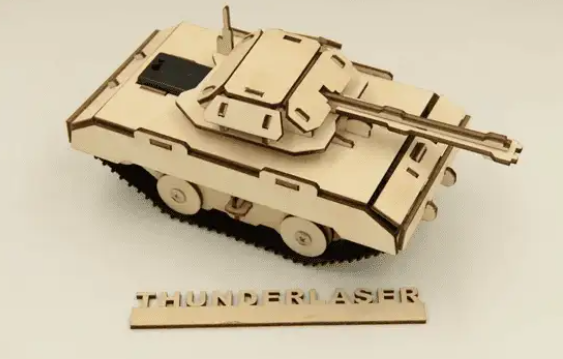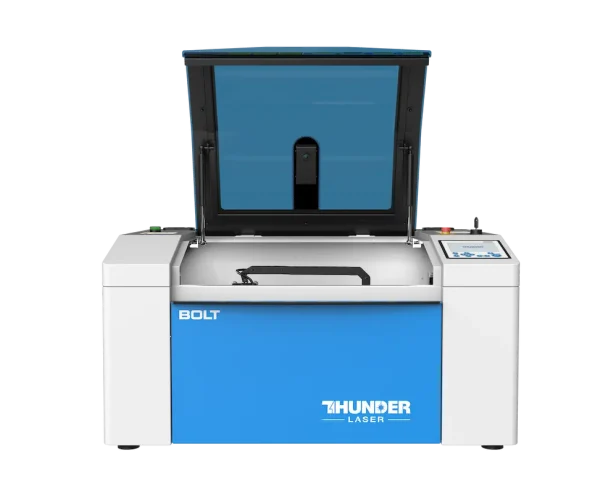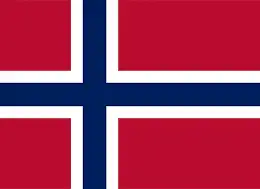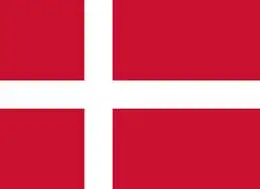MDF laser machine, especially CO₂ systems, is an essential tool for precision cutting and engraving of Medium Density Fiberboard (MDF), a versatile and cost-effective material. As demand for accuracy and efficiency grows, this machine is ideal for applications from architectural prototypes to custom interior components.
This article covers how MDF laser machine works, key settings, common issues and solutions, and how to select the right laser machine.

1. Working Principle of MDF CO₂ Laser Machine
A power source discharges electrical current to pass through a gas-lasing medium consisting of carbon dioxide, nitrogen, and traces of helium, hydrogen, and xenon. The electrical current then excites the nitrogen molecules to a higher energy level. The continuous vibration of these high-energy molecules results in energy transfer to carbon dioxide molecules.
This stimulation process continues to cause a cascade of excitation until most of the carbon dioxide molecules are in a metastable state, whereby it emits infrared light and brings it to a lower energy level.
There are mirrors parallel to each other near and within the cavity where the infrared light photons move perpendicularly. One of the mirrors transmits partial light off the cavity, while the other set of mirrors focuses the beam onto the material for cutting.
2. Parameter Settings of MDF Laser Machines

It is essential to have the correct parameter combinations to ensure an accurate and high-quality process when engraving, cutting, or marking a specific material. The critical parameters to consider when laser cutting MDF and determining the quality of the cut include the following:
The power parameter determines the laser beam power output, in that the power output required depends on the material. For instance, MDF would need a higher power output than light materials like paper.
The speed parameter determines the movement pace of the laser beam and its exposure time on the material. High speeds of the laser beam result in shorter exposure time hence suitable for laser engravings, while low speeds result in longer exposure time, thus ideal for MDF laser cutting.
The air assist parameter helps to influence the quality of a cut surface. The air volume affects the level of air assist because a higher air volume provides a higher assist.
During the MDF laser cutting process, dust particles adhere to the lens and may damage it from properly functioning. Air assist thus prevents such damage from happening. Air assist also balances the temperatures when cutting to avoid burning the material.
The laser path parameter determines the focus position on the material and the number of passes on the surface. The z-offset determines the focus point in that the zero mark means the laser beam is on the material. The number of laser passes affects the cut quality for delicate materials that need less stress.
It may require the operator to increase the number of laser-passes over the surface while lowering power output and increasing the speed. However, some materials may require deliberate defocusing when cutting a specific area.
3. Application Industry of MDF Laser Machine

A wide range of laser application industries utilize MDF laser machine in engraving, cutting, and marking different materials to achieve their desired product. These machines often work hand-in-hand in the following industries.
In the building and architecture industries, MDF laser machine often used to cut and engrave shapes used in architectural models to visualize the designs and plans. Architects draw their shapes using CAD or other design programs. Then, the laser machine cuts to scale the shapes used in making the models.
In the education industry, the MDF laser machine enhances learning by making it more accessible and efficient. Many universities and colleges now incorporate laser technology into their curriculum, allowing students to explore digital fabrication and turn their ideas into physical scale models and prototypes.
In the furniture and interior design industry, laser machines cut and engrave MDF in building cabinets, tables, chairs, wall paneling, and even three-dimension wall decorations. The high fiber density of MDF makes it easy to carve delicate details on it, producing high-quality furniture and interior design pieces.
In the signage and display industry, laser machines provide accurate and clean graphic finishes that allow for creation of different shapes, suitable for pop-up signs and displays. Besides laser cutting MDF to the desired shapes and designs, laser engravers are applicable in engraving signs, labels, and badges on the fiberboard.
The art and craft industry is a vast field that, in one way or another, manifests in all the industries employing laser machines, especially cutters and engravers. The applications of art and craft range from making jewelry, board games, stamps, and other personalization applications. Laser machines help cut, engrave, and mark MDF fiberboards to visualize the desired shapes, patterns, or images to give them a personal touch.
4. Common Faults and Solutions
The common faults experienced on an MDF laser machine are typically technical but can be resolved by the user through simple steps. These faults include the following:
When there are unusual chiller alarms, the problem could be that the water level of the chiller is low, or there could be a blockage in the water circulation pipes. To solve this issue, the operator should always maintain the water level within the green area and confirm water circulation in the tubes. If the alarm continues, the operator can refer to the chiller maintenance guide for further troubleshooting steps.
If the red dot is invisible or does not come out of the laser head, the problem could be that the red dot pointer is off or not aligned. To solve this issue, the operator should turn on the red dot pointer and use the adjustment screws on the pointer mount to move the red dot to the desired position.
If there is an absence of air assist, the problem could be that the air compressor has a breakdown which is solved by using the chiller’s power cable to troubleshoot. It could also mean wrong parameter settings and can be solved by correcting the software parameters; for this case, the operator should set the ‘if blowing’ parameter to ‘YES’. The absence of air assist could also mean closed air valves that need opening.
If the exhaust fan is misbehaving by not releasing smoke or dust, it could have a breakdown and can be solved by using the chiller’s power cable to test the exhaust fan. Connecting the fan inlet and outlet in opposite directions could also solve this problem. The exhaust channels could also have a blockage, which is avoidable by frequently cleaning the fan.
When there are laser engraving and cutting problems, such as some points of the material not cutting through or poor quality of engravings, this could mean that the focus point is lost, the lens and reflective mirrors could be dirty, or a misalignment of the laser beam.
To solve this issue, the working table must always be even to avoid bending the material when cutting. Mirror and vertical alignment would also solve the problem of the misaligned laser beam. Cleaning the focus lens and reflective mirrors frequently would also solve this issue.
Another common fault is laser beam absence, which could indicate that the laser switch is off, or the power supply and laser tube are worn out, or there are issues with the laser path or machine parameters. To solve this issue, check if the power light is on and the fan is running. If the laser beam is still absent, the operator should follow the troubleshooting instructions provided by the manufacturer to test the proper functioning of the power supply and laser tube and set the machine parameters correctly.
5. How to Choose the Right Laser Machine for MDF

Before purchasing an MDF laser machine, the consumer factors in their necessities to guide them to buy a suitable one. Some of the factors that guide one in choosing the best laser machine to purchase include the laser type, size of the floor or working area, laser power, and reliability and quality of services.
The type of material determines the type of laser machine to purchase. A CO₂ laser is the most suitable laser type for cutting MDF.
The size of the workpieces determines the size of the floor or the working area. For the case of MDF engraving and cutting, a bigger space is suitable to allow enough room for working without restrictions.
Laser power is another vital factor that customers consider when purchasing a laser machine. The purpose for which the machine is intended thus dictates the size of the machine to purchase.
For laser engraving purposes, a power of twenty-five to eighty watts is suitable, while for laser cutting purposes, a power of more than eighty watts is suitable. However, purchasing a high-power MDF laser machine for flexibility reasons over a range of different materials is advisable.
It is also crucial that a consumer prioritizes a machine’s reliability and quality when purchasing a MDF laser machine. Thunder Laser provides high-quality and reliable laser machines that offer the precision and accuracy desired by consumers.
Conclusion
MDF laser machine has revolutionized the way industries approach precision cutting and engraving. From architecture and education to signage and furniture design, its applications are both broad and impactful. By understanding its working principles, optimal settings, and how to troubleshoot common issues, users can fully harness its potential. Whether you’re a beginner or an experienced user, investing in a reliable system like Thunder Laser ensures you get the quality and performance needed for professional results.
FAQs About MDF Laser Machine
Q1. How do I clean my MDF laser machine after laser cutting MDF?
Clean the lens, mirrors, and exhaust fan regularly to remove MDF dust and residue, which can affect cutting performance and optics.
Q2. Why does MDF burn or smell bad during laser cutting?
MDF contains resin and glue that release strong odors or burn marks. Use proper ventilation and adjust speed and power settings.
Q3. What’s the difference between laser cutting plywood and MDF?
MDF has a smoother surface and engraves more evenly. Plywood may cut cleaner but can produce inconsistent engraving due to grain layers.
Q4. Why are the edges of laser cutting MDF dark or burnt?
The dark edges are due to heat from the laser burning the resin and fibers in MDF. This is common but can be reduced with optimized speed, power, and air assist settings.
Q5. How to store MDF after laser engraving or cutting?
After laser engraving or cutting MDF, store it in a dry, cool place away from direct sunlight and humidity. Use protective covers to prevent dust and scratches. If possible, store it flat to avoid warping.


.png) International
International
 United States
United States
 Brasil
Brasil
 Canada
Canada
 Costa Rica
Costa Rica
 Česká
Česká
 Ελλάδα
Ελλάδα
 Polska
Polska
 Ireland
Ireland
 Portugal
Portugal
 Lietuva
Lietuva
 Россия
Россия Deutschland
Deutschland
 Britain
Britain
 Україна
Україна
 France
France
 Sverige
Sverige
 Italia
Italia
 Norway
Norway
 Denmark
Denmark
 Romania
Romania
 한국
한국
 中国
中国
 ประเทศไทย
ประเทศไทย
 中国香港
中国香港
 Israel
Israel
 中國臺灣
中國臺灣
 India
India
 پاکستان
پاکستان
 پශ්රී ලංකා
پශ්රී ලංකා
 ジャパン
ジャパン
 Australia
Australia
 New Zealand
New Zealand
 South Africa
South Africa